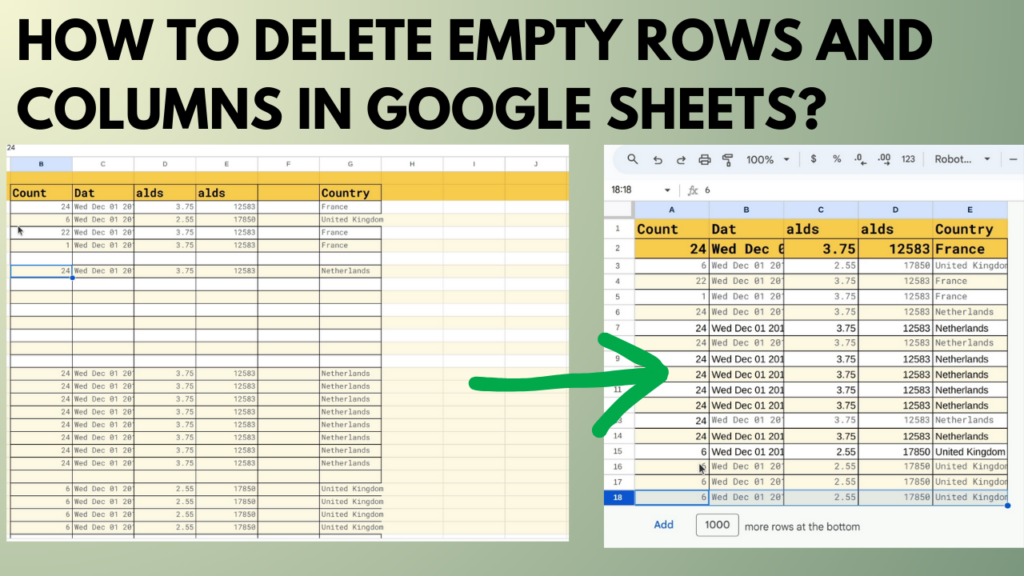This article explores how to build a linear regression model, using machine learning as an example. Linear regression is a powerful statistical technique that can be applied to various fields, including finance, marketing, and healthcare. The article will provide step-by-step guidance on how to create and train a linear regression model, as well as how to interpret the results. Whether you’re an aspiring data scientist or a seasoned professional looking to enhance your machine learning skills, this article will serve as a comprehensive guide to mastering linear regression modeling.
How to Build a Linear Regression Model – Machine Learning Example from freeCodeCamp.org
Linear regression is a statistical modeling technique used to establish a relationship between a dependent variable and one or more independent variables. In this article, we will explore the step-by-step process of building a linear regression model, using a machine learning example from freeCodeCamp.org.

What is a Linear Regression Model?
Definition of Linear Regression
Linear regression is a statistical technique that aims to model the relationship between a dependent variable and one or more independent variables by fitting a linear equation to observed data. The equation takes the form of Y = a + bX, where Y is the dependent variable, X is the independent variable, a is the y-intercept, and b is the slope of the line.
Linear regression assumes that there is a linear relationship between the dependent variable and independent variables, along with other assumptions such as homoscedasticity, linearity, and independence of errors. It is widely used in various fields, including economics, finance, social sciences, and machine learning.
Applications of Linear Regression
Linear regression can be used for a wide range of applications, including:
-
Predictive Analysis: Linear regression models can be used to predict future outcomes based on historical data. For example, predicting the sales of a product based on advertising expenditure.
-
Causal Inference: Linear regression models can be used to analyze the causal relationship between independent variables and the dependent variable. For example, studying the impact of education levels on income.
-
Trend Analysis: Linear regression models can be used to analyze and quantify trends over time. For example, analyzing the increase in temperature over the years.
-
Forecasting: Linear regression models can be used to forecast future values based on historical data. For example, forecasting stock prices based on historical trends.
Key Concepts in Linear Regression
Before diving into the process of building a linear regression model, it is important to understand some key concepts:
-
Dependent Variable: The dependent variable, also known as the target variable or response variable, is the variable we want to predict or explain. It is denoted by Y.
-
Independent Variables: Independent variables, also known as predictor variables or features, are the variables that are used to predict or explain the value of the dependent variable. They are denoted by X1, X2, X3, …, Xn.
-
Coefficient: The coefficient, denoted by b, represents the change in the dependent variable for a unit change in the independent variable, all other variables being constant.
-
Intercept: The intercept, denoted by a, represents the value of the dependent variable when all independent variables are zero.
-
Error Term: The error term, denoted by ε, represents the variability in the dependent variable that is not explained by the independent variables.

Why use Linear Regression?
Advantages of Linear Regression
Linear regression offers several advantages, including:
-
Simplicity: Linear regression is relatively easy to understand and implement, making it a popular choice for beginners.
-
Interpretability: The coefficients in a linear regression model provide insights into the relationship between the dependent variable and independent variables. These coefficients can be interpreted to understand the impact of each independent variable on the dependent variable.
-
Efficiency: Linear regression models can be trained quickly, even with large datasets. In addition, they perform well when the relationship between the dependent variable and independent variables is approximately linear.
-
Baseline Model: Linear regression can serve as a baseline model for more complex machine learning algorithms. It provides a simple and interpretable benchmark against which the performance of other models can be compared.
Disadvantages of Linear Regression
Despite its advantages, linear regression has a few limitations, including:
-
Linearity Assumption: Linear regression assumes a linear relationship between the dependent variable and independent variables. If the relationship is non-linear, linear regression may not accurately model the data.
-
Outliers: Linear regression is sensitive to outliers, which can have a disproportionate impact on the model’s coefficients and predictions.
-
Multicollinearity: Linear regression assumes that the independent variables are not highly correlated with each other. When there is multicollinearity, it becomes challenging to interpret the coefficients accurately.
-
Homoscedasticity Assumption: Linear regression assumes that the error terms have constant variance. If the variance of the error terms is not constant (i.e., heteroscedasticity), it can affect the model’s predictions and significance tests.

Step-by-Step Guide to Building a Linear Regression Model
Building a linear regression model involves several steps. Let’s explore each step in detail:
1. Gather and Prepare Data
The first step in building a linear regression model is to gather and prepare the data. This involves:
1.1 Data Collection
Collecting relevant data is crucial for building an accurate and reliable model. The data should include the dependent variable and independent variables. Ensure that the data is representative and covers a sufficient range of values for each variable.
1.2 Data Cleaning
Data cleaning involves removing any irrelevant or duplicate data, handling missing values, and correcting any inconsistencies in the data. This step ensures that the data is of high quality and ready for analysis.
1.3 Feature Selection
Feature selection involves choosing the independent variables that are most relevant for predicting the dependent variable. It is essential to select features that have a strong relationship with the dependent variable and exclude any irrelevant or redundant features.
1.4 Data Transformation
Data transformation may be required to meet the assumptions of linear regression. Common transformations include log transformations, power transformations, and standardization. These transformations help improve the linearity, homoscedasticity, and normality assumptions of linear regression.
2. Split the Data into Training and Testing Sets
To evaluate the performance of the linear regression model, it is essential to split the data into training and testing sets. The training set is used to train the model, while the testing set is used to evaluate how well the model performs on unseen data. Typically, a random 80:20 split is used, with 80% of the data used for training and 20% for testing.
3. Create and Train the Linear Regression Model
Once the data is prepared and split into training and testing sets, the next step is to create and train the linear regression model. This involves:
3.1 Model Selection
Selecting the appropriate model is crucial for obtaining accurate and reliable predictions. In linear regression, various modeling techniques, such as ordinary least squares (OLS), ridge regression, and lasso regression, can be used depending on the specific requirements of the problem.
3.2 Model Initialization
Initializing the model involves setting the initial values for the model’s parameters. In linear regression, this includes initializing the intercept and coefficient values.
3.3 Model Training
Training the model involves fitting the linear regression equation to the training data. This process estimates the coefficients that best fit the data and minimize the error between the predicted values and the actual values of the dependent variable.
4. Evaluate the Model
After training the model, it is essential to evaluate its performance to ensure its reliability and accuracy. This involves:
4.1 Accuracy Metrics
Calculating accuracy metrics, such as mean squared error (MSE), mean absolute error (MAE), and R-squared, provides insights into how well the model predicts the dependent variable. These metrics quantitatively assess the model’s performance and help compare different models.
4.2 Performance Visualization
Visualizing the model’s performance through scatter plots, residual plots, and predicted vs. actual plots helps identify any patterns or anomalies in the model’s predictions. These visualizations provide a comprehensive understanding of how well the model fits the data.
5. Make Predictions
Once the model is trained and evaluated, it can be used to make predictions on new, unseen data. Predictions can be made by providing the independent variable values to the model and obtaining the corresponding predicted values of the dependent variable.
6. Fine-tune the Model
After making initial predictions, it is important to fine-tune the model to improve its performance. This involves:
6.1 Hyperparameter Tuning
Hyperparameter tuning involves adjusting the model’s hyperparameters to optimize its performance. Hyperparameters, such as the learning rate, regularization strength, and maximum number of iterations, can be fine-tuned through techniques like grid search or randomized search.
6.2 Cross-validation
Cross-validation helps assess the model’s performance on different subsets of the data. Techniques like k-fold cross-validation can provide a more robust estimate of the model’s performance and can help avoid overfitting or underfitting.
7. Evaluate the Final Model
Once the model is fine-tuned, it is important to evaluate its performance on the testing set. This step provides an unbiased estimate of the model’s performance on unseen data and helps ensure its generalizability.
7.1 Comparison with Baseline Models
Comparing the final model’s performance with baseline models, such as simple mean prediction or a naive model, helps assess the improvement achieved by the linear regression model.
7.2 Model Interpretation
Interpreting the coefficients of the final model provides insights into the relationship between the dependent variable and independent variables. It helps understand the impact of each independent variable on the dependent variable and can guide decision-making.

Conclusion
Building a linear regression model involves a systematic step-by-step process, from data collection and preparation to model evaluation and fine-tuning. By following this guide, you can successfully build a linear regression model for your specific machine learning problem. Linear regression models offer simplicity, interpretability, and efficiency, making them a valuable tool for predictive analysis, causal inference, and trend analysis. However, it is important to consider the assumptions and limitations of linear regression and choose appropriate modeling techniques for accurate and reliable predictions.

